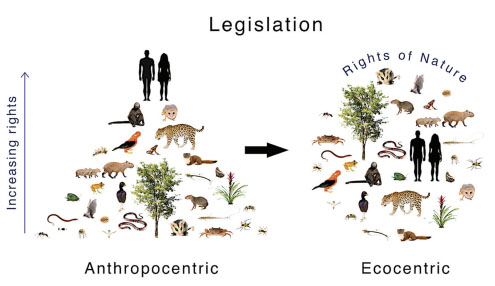The importance of agroforestry systems in supporting biodiversity conservation and agricultural production: a European perspective
By M. R. Mosquera-Losada, J. J. Santiago-Freijanes, A. Rigueiro-Rodríguez, F. J. Rodríguez-Rigueiro, D. Arias Martínez, A. Pantera, N. Ferreiro-Domínguez
Biodiversity has become a key international environmental and production issue in recent decades, as shown by the Convention on Biological Diversity (CBD) agreed at the Rio de Janeiro Summit in 1992 (UN 1992). More recently, action on biodiversity has been reinforced with a global strategic plan to combat biodiversity losses (Aichi targets (CBD 2010)) as well as other initiatives such as the EU’s 2020 biodiversity strategy (EC 2011b).
Defining and validating regenerative farm systems using a composite of ranked agricultural practices
Published in F1000Research 2021, 10:115
Tommy L.D. Fenster1,2, Claire E. LaCanne1,3, Jacob R. Pecenka1,4, Ryan B. Schmid1, Michael M. Bredeson1, Katya M. Busenitz1,5, Alex M. Michels1,6, Kelton D. Welch1, Jonathan G. Lundgren
Ongoing efforts attempt to define farms as regenerative to aid marketers, policymakers, farmers, etc. The approach needs to balance precision with function, and must be transparent, simple, scalable, transferable, incorruptible, and replicable. We developed practice-based scoring systems to distinguish regenerative cropland and rangeland, and validate them based on whether these scores scaled with regenerative goals on actual farm operations. Study systems included cornfields of the Upper Midwest, almond orchards of California, and rangeland systems of the Northern Plains. Response variables included soil carbon and organic matter, soil micronutrients, water infiltration rates, soil microbial communities, plant community structure, invertebrate community structure, pest populations, yields, and profit.
Marine biosecurity: protecting indigenous marine species
Published in Research and Reports in Biodiversity Studies
Nonindigenous species (NIS) are those that have been intentionally or unintentionally introduced outside of their native range as a consequence of human activity. If these species then threaten indigenous species and biodiversity, and/or cause economic damage, they are referred to as “invasive.” Biological invasions are not only one of the greatest threats to indigenous marine biodiversity, but they can also cause massive economic and ecological damage. Their presence could also lead to a water body failing to achieve good environmental status under the forthcoming EU Marine Strategy Framework Directive. As the rate of invasion to Great Britain and European waters continues to increase, particularly in light of climate change, the emphasis by member states is on prevention rather than on control or eradication an NIS once an invasive NIS has become established. This paper reviews NIS biosecurity planning for the marine environment, including the most current legislative background, pathway identification and highlights the main issues with the current risk assessment processes. The potential impacts of marine NIS, practical biosecurity measures from Great Britain and internationally are also reviewed. The aim of this paper is to draw attention to the challenges associated with preventing the introduction of marine NIS and to highlight the urgent need for concerted action across the EU member states and marine industries to produce robust biosecurity plans to protect indigenous species.
Unleashing traditional ecological knowledge for biodiversity conservation and resilience to climate change in Rwanda
Published in African Journal of Science, Technology, Innovation and Development
Nathan Kanuma Taremwa, Marie-Christine Gasingirwa, Donat Nsabimana
The purpose of this study was to assess how traditional ecological knowledge systems can be leveraged to achieve biodiversity conservation and build resilience to climate change. A sequential mixed methods approach was used to study 379 local people residing around the Nyungwe National Park, Rwanda. Rusizi district was purposively sampled and as well as three sectors in it, within which random sampling was used to sample the villages, in which households were sampled conveniently and the locals purposively. Structured interviews and focus group discussions were used to collect data. Quantitative data collected were analyzed in SPSS 25 and the qualitative data thematically analyzed. The results indicate that all biodiversity conservation principles were practised by 71% (n = 270) of the local people. The widest spread species in Nyungwe National Park are trees (n = 219, 57.8%). However, bush burning is practised outside the park (n = 328, 86.5%). Controlled tree cutting (adjusted odds ratio, AOR = 1.167, CI = 1.007–2.032), and awareness of biodiversity and practice measures that usually avoid harm to biodiversity (AOR = 1.610, CI = 1.029–2.519), are protective of biodiversity conservation. Biodiversity conservation is not universal among locals residing around Nyungwe National Park; only 7 in 10 of them are conservation-oriented. Knowledge about forest conservation and controlled bush-burning practices are most the most protective of conservation.
 China
China  Africa
Africa 

